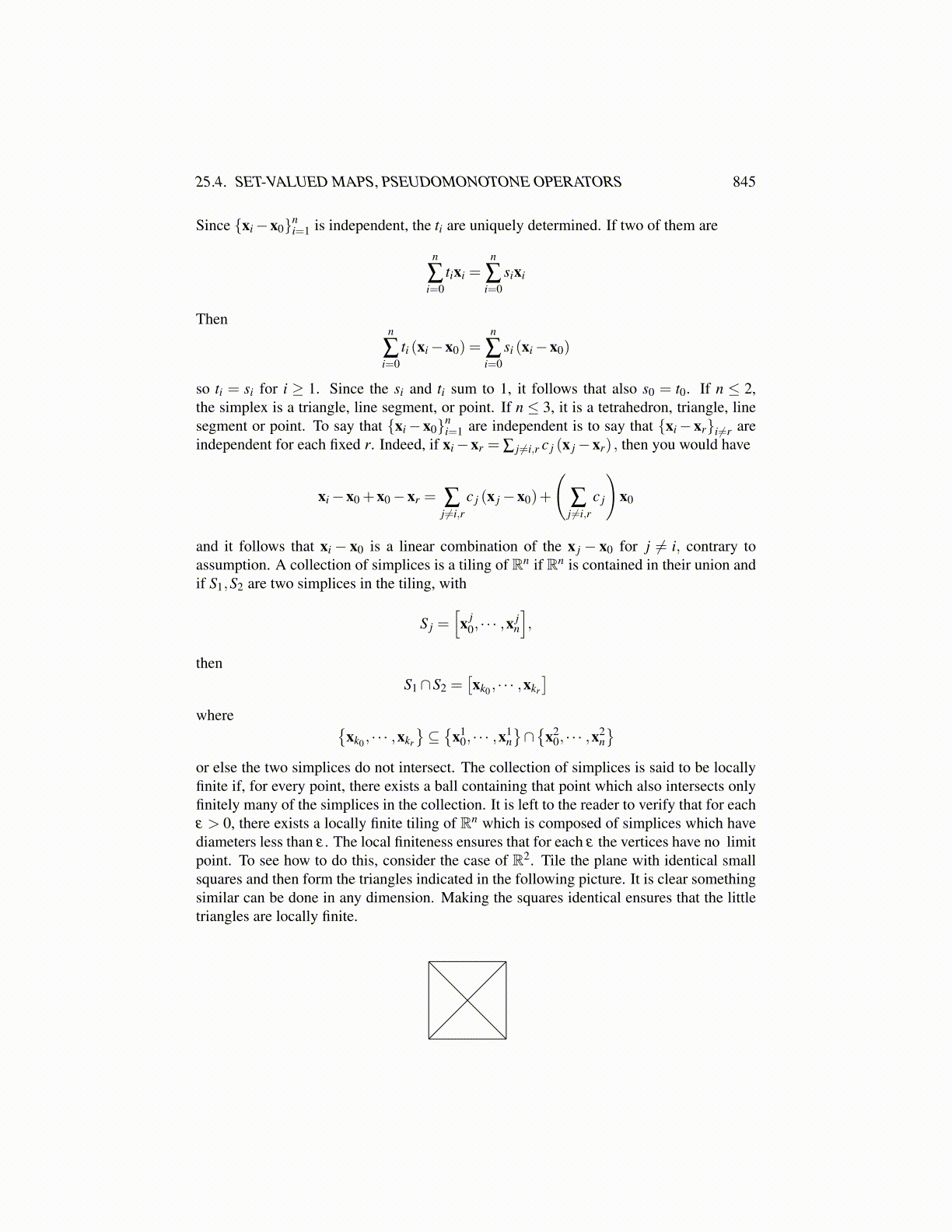
25.4. SET-VALUED MAPS, PSEUDOMONOTONE OPERATORS 845
Since {xi−x0}ni=1 is independent, the ti are uniquely determined. If two of them are
n
∑i=0
tixi =n
∑i=0
sixi
Thenn
∑i=0
ti (xi−x0) =n
∑i=0
si (xi−x0)
so ti = si for i ≥ 1. Since the si and ti sum to 1, it follows that also s0 = t0. If n ≤ 2,the simplex is a triangle, line segment, or point. If n ≤ 3, it is a tetrahedron, triangle, linesegment or point. To say that {xi−x0}n
i=1 are independent is to say that {xi−xr}i̸=r areindependent for each fixed r. Indeed, if xi−xr = ∑ j ̸=i,r c j (x j−xr) , then you would have
xi−x0 +x0−xr = ∑j ̸=i,r
c j (x j−x0)+
(∑
j ̸=i,rc j
)x0
and it follows that xi − x0 is a linear combination of the x j − x0 for j ̸= i, contrary toassumption. A collection of simplices is a tiling of Rn if Rn is contained in their union andif S1,S2 are two simplices in the tiling, with
S j =[x j
0, · · · ,xjn
],
thenS1∩S2 =
[xk0 , · · · ,xkr
]where {
xk0 , · · · ,xkr
}⊆{
x10, · · · ,x1
n}∩{
x20, · · · ,x2
n}
or else the two simplices do not intersect. The collection of simplices is said to be locallyfinite if, for every point, there exists a ball containing that point which also intersects onlyfinitely many of the simplices in the collection. It is left to the reader to verify that for eachε > 0, there exists a locally finite tiling of Rn which is composed of simplices which havediameters less than ε . The local finiteness ensures that for each ε the vertices have no limitpoint. To see how to do this, consider the case of R2. Tile the plane with identical smallsquares and then form the triangles indicated in the following picture. It is clear somethingsimilar can be done in any dimension. Making the squares identical ensures that the littletriangles are locally finite.